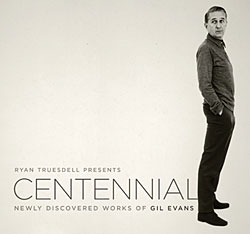Video: Eric Chenaux, "Put In Music"
Eric Chenaux, at Casa del Popolo, Montreal, performing "Put In Music" from the beautiful album, Guitar & Voice.
Eric Chenaux, at Casa del Popolo, Montreal, performing "Put In Music" from the beautiful album, Guitar & Voice.
It was the spring of 1982. John Crabbe, then editor of the British magazine Hi-Fi News & Record Review, and I had driven up to Quad's factory in Huntingdon, England. The ESL-63 electrostatic loudspeaker had been launched the previous summer, and we were to interview its designer, Peter J. Walker, for an article that would appear in the July 1982 issue of HFN/RR. Peter set up a pair of ESL-63s on wooden kitchen chairs, fed one of them a 300Hz squarewave, casually placed a mike before it, and showed us the result on the 'scope. "Of course, why should a speaker being able to reproduce a squarewave matter at all, hmmm?" he rhetorically asked us.
Even when Loudon Wainwright III (left in photo with Ramblin' Jack Elliot) was a young man he was writing autobiographical songs, and his old themes of family, sex, and death resonate more deeply on his new record, Older Than My Old Man Now. He usually performs solo, armed with just an acoustic guitar or a banjo, but most of his recordings present more heavily produced versions of LWIII's music. When I chatted with LWIII in late April I wanted to explore that dichotomy and how those transformations take place.
Initially, I had planned on enjoying a low-key Record Store Day, visiting my local independent shop, Iris Records, and simply leaving it at that. But things never go the way I plan. The allure of J&R Music World in Lower Manhattan, just a short trip across the Hudson, was too great to resist. And if I was going to be in Manhattan, how could I not head over to In Living Stereo? The hi-fi shop was hosting an all-day event with live music, sales on used records, and free beer. It was my duty to attend. And, of course, In Living Stereo is just steps away from my very favorite record shop, Other Music, so I would have to drop by there, too.
Here’s what I picked up along the way:
It wasn't just any part of the Mahler Ninth: It happened during the exceedingly quiet closing measures of the final movement.
It wasn't just any symphony orchestra: It was the New York Philharmonic, which Gustav Mahler directed during the last two years of his life.
 Ryan Truesdell: Centennial: Newly Discovered Works of Gil Evans
Ryan Truesdell: Centennial: Newly Discovered Works of Gil EvansIt is dreamlike when the opening track, "Punjab," begins so softly, with the tapping of a tabla. Exotic woodwinds, perhaps English horn and bassoon, murmur in the left channel, whisper in the right. It is dreamlike because Gil Evans died in 1988, yet this unfamiliar music sounds like him, and when suddenly that deep, solemn brass figure looms out of the right channel, it could only be him. More instruments enter, and more motifs, with brighter colors from alto saxophone and flute. Like all the greatest Gil Evans music, "Punjab" creates its own world of high drama and mysterious allusion. It belongs in the exalted company of such Evans masterpieces as Out of the Cool and Sketches of Spain. And it is new.
Headphones have changed a lot over the last 20 years. First they were accessories; then they were legit listening devices but as ugly as an outhouse; then they were bright plastic necklaces and a rapper's gravy train; but of late, they're becoming a very human interface to our tunes, designed to sound good, look good, and feel good.
The Philips Fidelio L1 is a perfect example of such a headphone.